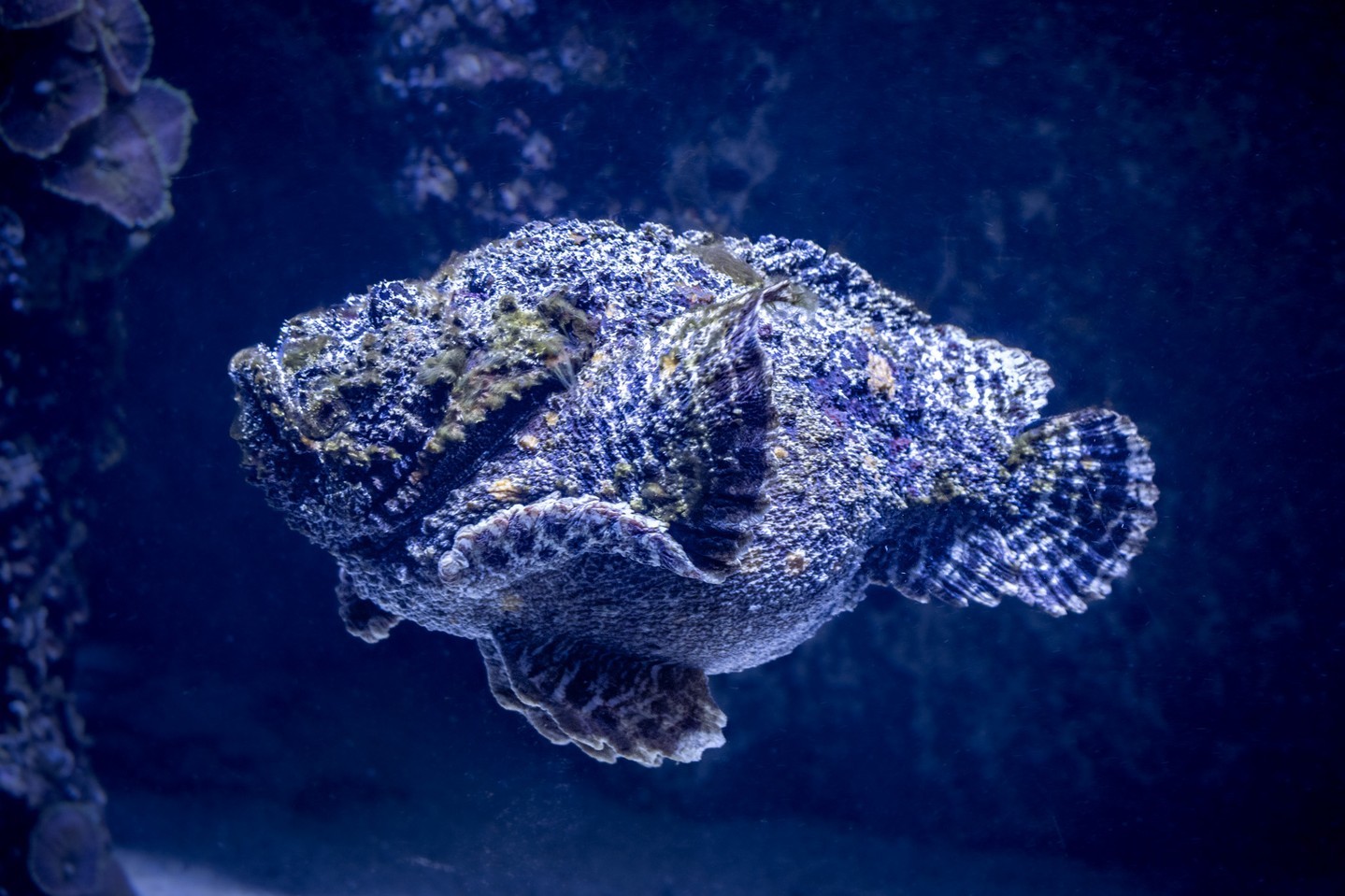- Masterful camouflage and hunting techniques of the stonefish
- The biological and anatomical features of the stonefish that contribute to its venomous nature
- The ecological role of stonefish in marine ecosystems
- Human interactions with the stonefish, including risks and medical implications
- Conservation efforts and the importance of protecting venomous fish species
The stonefish, a master of camouflage, stands as one of the ocean’s most enigmatic predators. Residing primarily in the shallow waters of the Indo-Pacific, this fish has evolved to blend seamlessly with its surroundings. Its appearance mimics the rocky seabed, allowing it to ambush prey with lethality. Its disguise is so effective that it often goes unnoticed by both predators and prey, a feature that has enabled its survival for millions of years. Understanding the camouflage tactics of the stonefish is key to appreciating its role in the marine food web.
Stonefish possess intricate structures across their skin, which contribute to their rocky appearance. These structures include ridges and warty protrusions that closely resemble the textures and colors of underwater stones. This adaptation is not merely for predation; it provides significant protection against other predators. The stonefish remains motionless for extended periods, effectively using its disguise to avoid detection. It lies in wait for unsuspecting fish and crustaceans, rapidly extending its mouth to create a vacuum that pulls prey inward in an instant. This hunting technique, combined with its camouflaged exterior, makes the stonefish a fearsome marine predator.
The stonefish’s venomous capabilities stem from an anatomical feature that is as fascinating as it is dangerous – its spines. It possesses thirteen sharp dorsal fin spines, each capable of injecting venom. These spines are a means of defense, activated when pressure is applied, such as when stepped on by an unwary swimmer. Within these spines are venom glands that deliver a potent toxin capable of causing severe pain, paralysis, and in extreme cases, death. The biological structure of these glands and spines showcases an evolutionary adaptation designed to maximize its survival chances in a harsh environment.
The venom itself contains a cocktail of proteins and enzymes that affect the cardiovascular and nervous systems, resulting in intense pain and swelling. Understanding the biochemical makeup of this venom is crucial for developing medical treatments to counteract its effects. Researchers continue to study stonefish venom to uncover potential medical applications and improve treatments for envenomation. This line of research not only aids in medical preparedness but also broadens our understanding of marine toxinology.
Ecologically, stonefish serve an important function in marine ecosystems. As ambush predators, they help control population levels of their prey, maintaining a balance that is critical to the health of reef environments. Their presence influences the distribution and behavior of other marine species, contributing to the biodiversity of coral reefs. This role underscores the importance of stonefish in the delicate equilibrium of marine ecosystems, highlighting the need for their protection despite the danger they pose to humans.
Human encounters with stonefish often occur accidentally, due to their effective camouflage. These interactions can lead to severe injuries, driving the need for awareness and education about this venomous fish. The medical implications of a stonefish sting can be dire if not treated promptly. Immediate treatment typically involves the application of hot water to the affected area, which can help alleviate pain by denaturing the venom’s proteins. In severe cases, antivenom may be required. Promoting understanding of the risks associated with stonefish can prevent accidents and mitigate their impacts.
Conservation efforts surrounding the stonefish focus on preserving its natural habitat, which faces threats from pollution, climate change, and human interference. Protecting coral reefs, where stonefish often reside, is vital to their survival. Conservation programs aim to reduce these threats through sustainable practices and public education on the importance of marine biodiversity. Highlighting the role of venomous species in marine ecosystems can garner support for efforts to conserve these fascinating creatures.
The stonefish, with its remarkable adaptations and ecological significance, deserves recognition and preservation. Through understanding their biology and role in the marine world, we can foster a deeper appreciation and commitment to conserving this distinctive and essential species.
*****
Source Description
Meet the most venomous fish in the world, the stonefish.
Known as masters of disguise, they can blend seamlessly into their surroundings, often looking like stones. This incredible camouflage helps them ambush unsuspecting prey, making them skilled hunters of the ocean.


